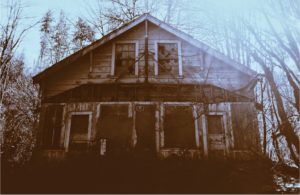 National vacancy rates in the fourth quarter 2019 were 6.4% for rental housing and 1.4% for homeowner housing, according to the U.S. Census Bureau. The rental vacancy rate of 6.4% was not statistically different from the rate in the fourth quarter 2018 (6.6%), but 0.4 percentage points lower than the rate in the third quarter 2019 (6.8%). The homeowner vacancy rate of 1.4% was not statistically different from the rate in the fourth quarter 2018 (1.5%) and virtually unchanged from the rate in the third quarter 2019.
National vacancy rates in the fourth quarter 2019 were 6.4% for rental housing and 1.4% for homeowner housing, according to the U.S. Census Bureau. The rental vacancy rate of 6.4% was not statistically different from the rate in the fourth quarter 2018 (6.6%), but 0.4 percentage points lower than the rate in the third quarter 2019 (6.8%). The homeowner vacancy rate of 1.4% was not statistically different from the rate in the fourth quarter 2018 (1.5%) and virtually unchanged from the rate in the third quarter 2019.
Danielle Hale, Chief Economist for realtor.com, commented on how vacancies may be shaped by the coronavirus outbreak.
"Looking forward, in 2020 the housing market continues to grapple with similar challenges: not enough home building leads to few homes available for sale, especially relative to the number of interested buyers," Hale said. "This leads to fast-moving housing markets and rising prices, which will likely be propelled even higher by 2020’s lower mortgage rates. There are new challenges, such as COVID-19, that buyers and sellers will face, but the data from 2019 shows that despite market conditions that are less-than ideal, buyers are generally achieving success in their pursuit of the American Dream of homeownership. The data also shows that, particularly for some age groups and races, there is still room for improvement."
The homeownership rate of 65.1% was not statistically different from the rate in the fourth quarter 2018 (64.8%) nor from the rate in the third quarter 2019 (also 64.8%). The fourth quarter 2019 rental vacancy outside Metropolitan Statistical Areas (7.4%) was higher than the rate in the suburbs (5.9%), but not statistically different from the rate in principal cities (6.7%).
The rental vacancy rates in principal cities, in the suburbs, and outside MSAs were not statistically different from the fourth quarter 2018 rates. The homeowner vacancy rate in outside MSAs (1.6%) was higher than the rate in the suburbs (1.3%), but not statistically different from the rate in principal cities (1.5 percent). The homeowner vacancy rate in the suburbs was lower than the fourth quarter 2018 rate, while rates in principal cities and outside MSAs were not statistically different from the fourth quarter 2018 rates.
The fourth quarter 2019 rental vacancy rate was highest in the South (8.2%) followed by the Midwest (6.8%), the Northeast (5.2%), and the West (4.4%). The rental vacancy rates in each region were not statistically different from the fourth quarter 2018 rates. The homeowner vacancy rate in the South (1.6%) was higher than in the Northeast (1.3%) and the West (1.2%), but not statistically different from the Midwest (1.3%). Homeowner vacancy rates in the Northeast, Midwest, and West were not statistically different from each other. The homeowner vacancy rates in each region were not statistically different from the fourth quarter 2018 rates.

 DSNews The homepage of the servicing industry
DSNews The homepage of the servicing industry









